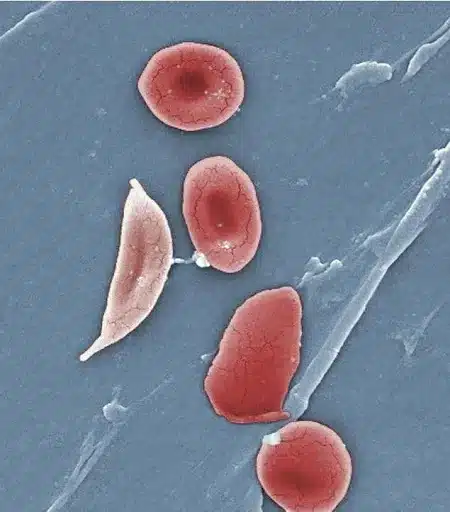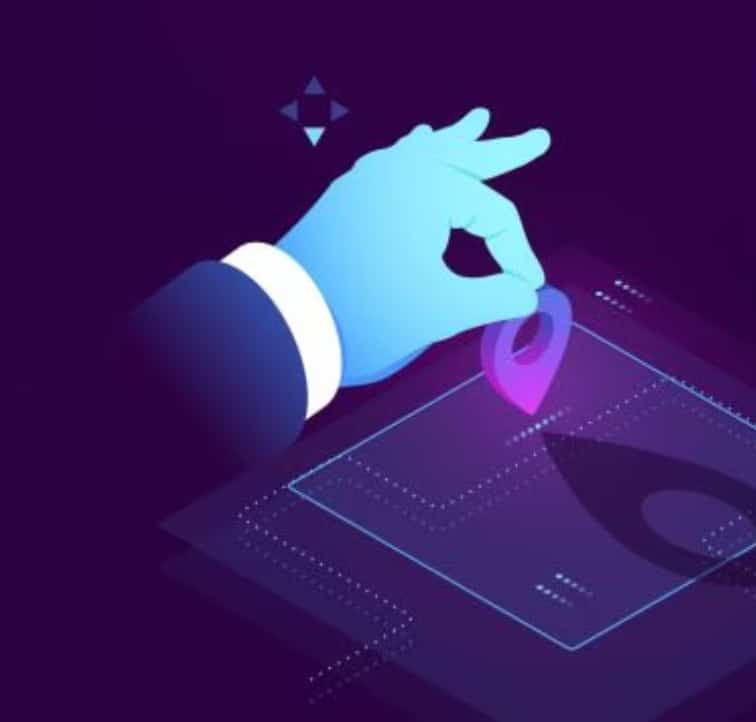What’s in today’s article?
- Why in News?
- What is Sickle Cell Anaemia (SCA)?
- What happens in SCA?
- SCA in India
- Steps taken by India to address SCA
- Hydroxyurea to treat sickle cell disease in children
Why in News?
The Indian Council of Medical Research (ICMR) seeks partners for a new project. They want to develop and commercialize a low-dose or children’s version of hydroxyurea. This medication will treat sickle cell disease in India. Eligible organizations are invited to express their interest.
What is Sickle Cell Anaemia (SCA)?
- First discovered by a physician named James Herrick, Sickle cell anemia is one of a group of inherited disorders known as sickle cell disease (SCD).
- It affects the shape of red blood cells, which carry oxygen to all parts of the body.
- Red blood cells contain hemoglobin, a protein that carries oxygen. Healthy red blood cells are round, and they move through small blood vessels to carry oxygen to all parts of the body.
- In someone who has SCD, the hemoglobin is abnormal, which causes the red blood cells to become hard and sticky and look like a C-shaped farm tool called a sickle.
What happens in SCA?
- A round red blood cell can move easily through blood vessels because of its shape but sickle red blood cells end up slowing and even blocking, the blood flow.
- Moreover, sickle cells die early, resulting in a shortage of red blood cells that deprive the body of oxygen.
- These obstructions and shortages may cause chronic anaemia, pain, fatigue, acute chest syndrome, stroke, and a host of other serious health complications.
SCA in India
- India is the second-worst affected country in terms of predicted births with SCA — i.e., chances of being born with the condition.
- In India, around 18 million people have sickle cell traits and 1.4 million patients have sickle cell disease.
- Sickle Cell Disease (SCD) is widespread among the tribal population in India where about 1 in 86 births among STs have SCD.
- A few states in India have a significantly higher SCD prevalence. These include:
- Chhattisgarh, West Bengal, Uttar Pradesh, Maharashtra, Madhya Pradesh, Jharkhand, Gujarat, Odisha, Kerala and Rajasthan.
- Collectively, these states are referred to as the sickle cell belt.
Steps taken by India to address SCA
- The Ministry of Tribal Affairs (MoTA) has launched the Sickle Cell Disease Support Corner to bridge the gap between patients and health care services in tribal areas.
- The Portal provides a web-based patient powered registration system which will collate all information related to SCD among tribal people in India.
- The National Council on Sickle Cell Disease has also been constituted for timely and effective action.
- In the Budget 2023-24, the government announced its plans to distribute “special cards” across tribal areas to people below the age of 40.
- The cards will be divided into different categories based on the screening results.
- The mission will receive funding under the National Health Mission.
- In July 2023, PM Modi launched National Sickle Cell Anaemia Eradication Mission (NSCAEM) 2047.
- The mission aims to address the pressing health challenges posed by sickle cell disease, particularly among the tribal population.
- It was announced in the Union Budget 2023.
- Through this mission, the government aims to eradicate sickle cell anemia from India in a mission mode by 2047.
- The mission aims to address the pressing health challenges posed by sickle cell disease, particularly among the tribal population.
Hydroxyurea to treat sickle cell disease in children
- About Hydroxyurea
- Hydroxyurea is an oral chemotherapy drug that is prescribed to people with sickle cell disease.
- It is a medicine that can help people who have sickle cell disease.
- It keeps blood cells round and flexible, so they flow better and deliver oxygen to the body more easily.
- Hydroxyurea, a myelosuppressive agent, is an effective drug for treating patients of sickle cell disease, and thalassemia.
- A myelosuppressive agent is a treatment that slows or stops the growth of blood-forming cells in the bone marrow.
- This can include chemotherapy, radiation therapy, and steroids.
- Hydroxyurea is an oral chemotherapy drug that is prescribed to people with sickle cell disease.
- Working
- When sickle cell blood cells are deoxygenated, they begin to clump together and form chains, or long polymers.
- As polymers, sickle cells are also stickier. This stickiness increases the risk of blockages developing in small blood vessels.
- Fetal hemoglobin (HbF) can prevent polymers from forming and, therefore, reduce the likelihood of blockages and organ damage from occurring.
- Hydroxyurea increases the amount of HbF in the blood, and this is how it prevents complications from sickle cell disease.
- Hydroxyurea for Children
- Most pharmaceutical companies in India offer hydroxyurea in 500 mg capsules or 200 mg tablets.
- The main challenge in treating pediatric patients is the lack of a suspension form, making low-dose treatment difficult.
- Service providers must break down high-dose tablets, risking dose accuracy and efficacy.
- There is a need for a pediatric formulation of hydroxyurea, especially considering the number of sickle cell disease cases and the goal of eliminating the disease in India by 2047.
Q.1. What is Hydroxyurea?
Hydroxyurea is an oral chemotherapy drug that is prescribed to people with sickle cell disease. It is a medicine that can help people who have sickle cell disease. It keeps blood cells round and flexible, so they flow better and deliver oxygen to the body more easily.
Q.2. What is Fetal hemoglobin (HbF)?
Fetal hemoglobin (HbF) is a type of hemoglobin found in fetuses and newborns. It differs from adult hemoglobin (HbA) in its structure and its ability to bind oxygen.
Source: ICMR seeks to provide oral formulation of hydroxyurea to treat sickle cell disease in children | Indian Express | Medical News Today
Last updated on December, 2025
→ Check out the latest UPSC Syllabus 2026 here.
→ Join Vajiram & Ravi’s Interview Guidance Programme for expert help to crack your final UPSC stage.
→ UPSC Mains Result 2025 is now out.
→ UPSC Notification 2026 is scheduled to be released on January 14, 2026.
→ UPSC Calendar 2026 is released on 15th May, 2025.
→ The UPSC Vacancy 2025 were released 1129, out of which 979 were for UPSC CSE and remaining 150 are for UPSC IFoS.
→ UPSC Prelims 2026 will be conducted on 24th May, 2026 & UPSC Mains 2026 will be conducted on 21st August 2026.
→ The UPSC Selection Process is of 3 stages-Prelims, Mains and Interview.
→ UPSC Result 2024 is released with latest UPSC Marksheet 2024. Check Now!
→ UPSC Prelims Result 2025 is out now for the CSE held on 25 May 2025.
→ UPSC Toppers List 2024 is released now. Shakti Dubey is UPSC AIR 1 2024 Topper.
→ UPSC Prelims Question Paper 2025 and Unofficial Prelims Answer Key 2025 are available now.
→ UPSC Mains Question Paper 2025 is out for Essay, GS 1, 2, 3 & GS 4.
→ UPSC Mains Indian Language Question Paper 2025 is now out.
→ UPSC Mains Optional Question Paper 2025 is now out.
→ Also check Best IAS Coaching in Delhi

















